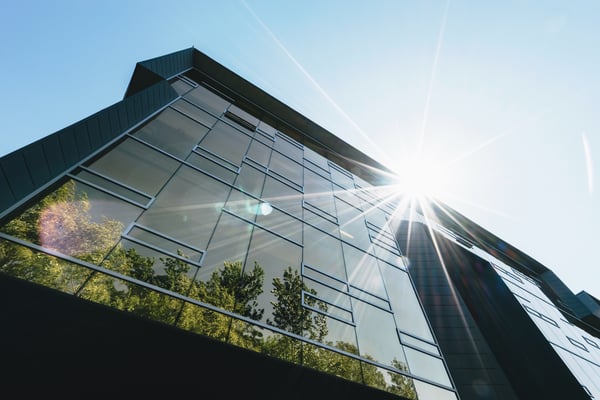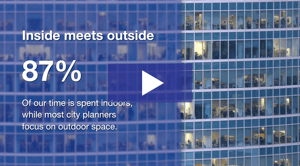Our environment is reaching its limit!
The current state of the climate is troubling at best. The average global temperature has warmed, snow and ice levels have diminished and the sea level has risen. And there are no signs of these trends slowing down unless significant action is taken to curb greenhouse gas emissions. In fact, the United Nations has called for countries to achieve net zero by 2050, meaning that by then any emissions would need to be balanced by removing CO2 from the air.
Urbanization is making things worse
By 2050, an additional 2.5 billion people are expected to move to a city, the UN has reported. This is in addition to the fact that almost half the world’s population already lives in cities. Not only are cities at risk from climate change -- like the impact of extreme heat events, public health outbreaks, or rising tides -- they are also exacerbating the problem. Despite the fact that cities cover less than 2% of the earth, they account for almost three quarters of the world’s carbon dioxide from global final energy use, as well as a significant portion of total greenhouse gas emissions.
In urban areas, the impact on the environment is markedly different than in rural areas. People in urban environments consume much more food and goods than rural populations. They also own more cars per capita and use more energy. Increased energy consumption creates heat islands in some places that contribute to changing local temperatures and weather patterns. At a micro level, buildings in cities consume a huge portion of primary energy and electricity, which is significant because the process of making energy is one of the largest sources of greenhouse gas (GHG) emissions worldwide.
Despite these challenges, action is being taken at every level of society to combat climate change. One of these changes is taking place at the micro level inside the four walls of what are known as ‘green buildings’.
What is a green building?
A green building is a building that’s designed with the health and wellbeing of both its occupants and the environment in mind. Everything about a green building, like how it’s constructed, operated and maintained, aims to minimize its impact on the environment and provide a healthy work environment. That includes things like:
- reducing water and energy consumption,
- minimizing greenhouse gas emissions,
- using eco-friendly building materials,
- decreasing landfill waste,
- being located thoughtfully to shrink commute times,
- encouraging renewable transportation use, and
- enhancing the natural environment with trees, green roofs or community gardens.
Not only do green buildings reduce negative impacts on the environment, but they also save money on operating costs, especially over the long run. They also attract and retain occupants who value the health and wellbeing of our planet and they enhance the brand value of companies who align with environmental principles.
Green buildings can be certified using LEED (Leadership in Energy and Environmental Design), the most commonly used green building rating system in the world. There are several different levels of LEED certification, depending on the credits a building achieves above and beyond the basic certification requirements. Regardless of the level it reaches, LEED-certified buildings are widely recognized as buildings that save energy, water and resources, generate less waste and support human health.
Green buildings help to combat climate change
Green buildings work to slow down the effects of climate change in two main ways. First, they are more energy efficient. Energy efficiency can be accomplished by conducting retrofits, optimizing operations, adding solar or renewable energy onsite, or taking advantage of existing landscape features like shade. In fact, by focusing on energy efficiency measures, new buildings can often reduce their energy consumption by up to 25% and old building by up to 16%. Furthermore, by 2040, changes to space heating, water heating, and water cooling could see buildings become nearly 40% more efficient than they are today.
Second, green buildings can help to promote green communities. Green communities take into account the many facets of the built environment and try to lessen their impact on the environment together. This includes increasing access to cleaner transportation or walking/cycling, reducing water usage, enhancing green spaces, and carefully planning cities and communities to minimize disruption to the environment. Green buildings, when situated inside green communities, can maximize their impact and contribute to an overall societal shift towards a healthier tomorrow.
The future of green buildings
Green buildings have become increasingly popular -- and important -- in the last several decades. As more occupants look for spaces that are good for both people and the environment, and as the pressures to slow and reverse climate change heats up, green buildings are here to stay.
There are many opportunities to green both old and new buildings. Sometimes these changes are major and involve deep retrofits. Other times, they require more nuanced actions to optimize workflows, people, processes and things. Regardless, greening a building benefits everyone -- the occupants, the environment, and the owner/operators’ bottom line.
Ready to begin your green building journey? Contact us today to see how we can help.





